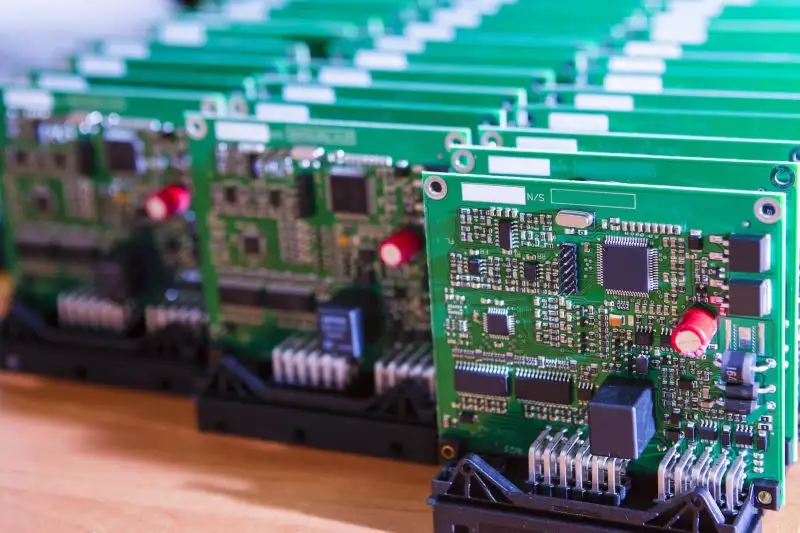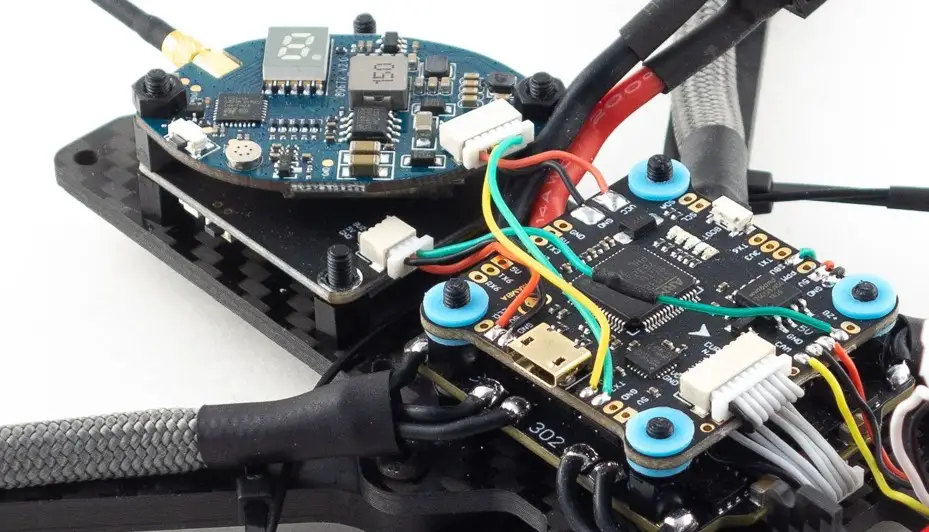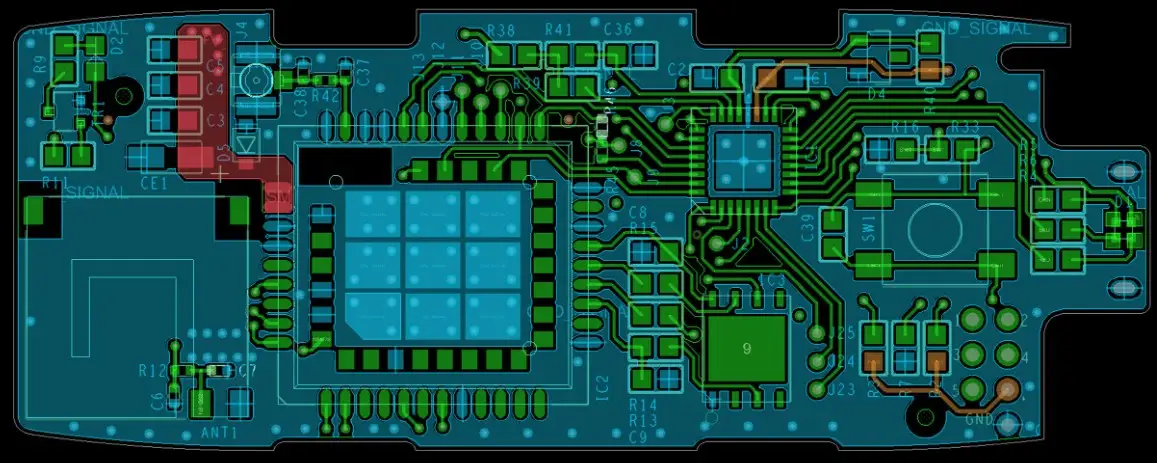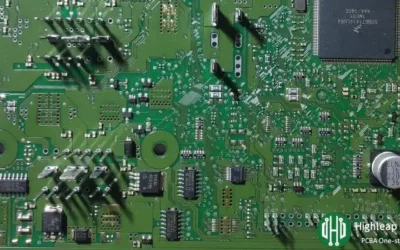Back to blog
Tailored PCB Manufacturing Services for Consumer Electronics

Consumer Electronics PCBA
At Highleap Electronic, we specialize in delivering high-quality optimized interconnect solutions tailored specifically for the dynamic world of consumer electronics. Our extensive range includes single-, double-, or multi-layered printed circuit boards meticulously designed to meet the unique requirements of consumer electronics applications. Whether you need boards for low-frequencies, mid-frequencies, high-frequencies, super-high frequencies, or ultra-high frequencies, we have the expertise to provide solutions that excel in the consumer electronics realm.
Additionally, our specialized offerings encompass metal core boards for heat-sink applications, high-voltage boards, heavy copper boards for high-current/high-power applications, HDI boards, and flexible boards. With Highleap Electronic, you can trust that our printed circuit boards will elevate the performance and reliability of your consumer electronics products, ensuring they stand out in the competitive market.
The Role of PCBs in Modern Consumer Electronics
In the realm of modern consumer electronics, PCBs hold a pivotal position, serving as the cornerstone of entire electronic devices.
PCBs function akin to the neural network of electronic devices, adeptly interconnecting various electronic components to enable coordinated operations and achieve diverse functionalities. Each day witnesses the emergence of new electronic devices, with PCBs playing a crucial role in their proper functioning. Their precisely engineered designs and dependable performance ensure the efficient operation of equipment within confined spaces.
As electronic technology continues to advance, particularly with the ongoing trend of electronic equipment miniaturization, the demands placed on PCBs are escalating. As PCB engineers, we bear a significant responsibility to continuously innovate and design more efficient and durable PCBs to meet the quest for exceptional performance in modern consumer electronics.
Evolution of Consumer Electronics: From Smartphones to Smart Cars
Between 2010 and 2024, the consumer electronics market saw a surge in mainstream products like smartphones, tablets, smartwatches, speakers, and home devices, streamlining daily life. Health-centric wearables like monitoring wristbands and sports watches gained popularity, alongside immersive entertainment gadgets such as gaming consoles, VR headsets, and smart TVs. Innovations extended to kitchen appliances like smart refrigerators and ovens, enriching home living. The introduction of DJI drones expanded possibilities, catering to aerial enthusiasts and professionals. As technology advances, foldable smartphones, wearable medical devices, and smart cars are emerging as sought-after consumer electronics.
This period witnessed continuous enhancements in consumer electronics, providing significant convenience. The integral role of PCBs in portable electronics cannot be overstated. These circuit boards endure various conditions, ensure battery efficiency, and facilitate swift performance, vital for user satisfaction. As electronics shrink in size, the demand for top-tier PCBs escalates. PCB engineers are pivotal in innovating durable solutions to meet evolving consumer needs and expectations.

Consumer Electronics Drone PCBA
Types of PCBs for Portable Electronics
Rigid-Flex PCBs
Rigid-flex PCBs combine the best of flexible and rigid board technology. They provide the flexibility needed during manufacturing and installation while maintaining the robustness required for daily use. Flexible boards often lack the durability for portable electronics, but rigid-flex PCBs solve this problem by layering flexible materials between rigid layers. These boards can be tailored to specific requirements, making them ideal for various applications.
Designing rigid-flex PCBs requires expertise, as they need to be engineered in a 3D environment to achieve the desired shape and functionality. Despite the challenges, their ability to save space and enhance durability makes them invaluable for small, portable electronics that demand efficiency without compromising on performance.
HDI PCBs
High-Density Interconnect (HDI) PCBs represent a leap in PCB technology. They offer increased circuitry density per unit, accommodating more functionality in a compact space. Features include through vias, buried vias, and multi-layer configurations, allowing for versatile designs.
HDI PCBs offer several benefits:
- Compact Size and Weight: Perfect for shrinking electronics, HDI boards maximize functionality while reducing physical footprint.
- Enhanced Performance: The reduced distance between components enhances electrical performance.
- Cost Efficiency: Their smaller size translates into lower material costs and quicker manufacturing.
The compact size and high efficiency of HDI PCBs make them ideal for various modern electronic devices, including laptops, tablets, wearables, and IoT devices.
Trends and Innovations in Consumer Electronics PCBA
In the dynamic realm of consumer electronics, the role of PCB engineers is paramount in driving innovation and meeting evolving demands. Let’s delve into the latest trends and innovations shaping PCB assembly (PCBA) in consumer electronics:
High-Density Interconnection (HDI): With the integration of Artificial Intelligence (AI) into consumer devices, the demand for more computing power in compact spaces has surged. HDI PCBs emerge as a crucial solution, accommodating more components on both sides of the board. Their compact size and enhanced functionality cater perfectly to the shrinking dimensions of modern gadgets.
Miniaturization of PCBA: The quest for smaller and lighter consumer electronics has intensified, necessitating intricate miniaturization efforts. From smartwatches to smart home devices, manufacturers seek PCBs with tighter design and assembly specifications. Achieving optimal functionality within constrained spaces mandates precision in layout, weight reduction, and adoption of advanced assembly methods.
Utilization of Advanced Materials: The complexity of consumer electronics drives the adoption of advanced PCB materials. Materials like resin-coated copper, liquid crystal polymers, and glass fibers not only bolster durability but also enable multifunctionality within a compact footprint. Such materials facilitate the integration of diverse features, from health monitoring to seamless connectivity, in a single device.
Electrostatic Discharge (ESD) Protection: Environmental challenges pose threats to device longevity and performance. At Highleap Electronic, we embed ESD protection in micro-devices and substrates during PCB manufacturing. This shield ensures that circuits remain safeguarded from electrostatic discharge, enhancing the resilience of consumer electronics in diverse environments.
Handling High Currents and Voltages: While low-voltage and low-current PCBs are prevalent in consumer electronics, emerging applications like solar power and electric vehicles demand boards capable of managing higher currents and voltages. Addressing thermal management becomes crucial to prevent overheating and ensure uninterrupted performance.
Augmented Reality (AR) and Virtual Reality (VR): AR and VR technologies are revolutionizing the consumer experience, particularly among younger demographics. The integration of these immersive technologies requires meticulous PCB engineering to support applications such as AR-enabled smartphones and VR gaming environments.
In essence, the landscape of consumer electronics is continuously evolving, and PCB engineers stand at the forefront, driving innovation to meet the ever-changing needs of consumers.

Consumer Electronics IOT PCB
Highleap Electronic: Your Premier Partner for Consumer Electronics PCB Solutions
In the dynamic landscape of consumer electronics, staying ahead of the curve is paramount. At Highleap Electronic, we pride ourselves on being your trusted source for cutting-edge PCB solutions tailored to meet the demands of the ever-evolving consumer electronics industry.
The rapid pace of innovation in consumer electronics presents unique challenges, particularly when it comes to time-to-market considerations. Coupled with the ongoing trend of miniaturization, the need for advanced PCB technologies has never been more pressing. Highleap Electronic rises to this challenge, offering innovative products that inspire developers to create smaller yet more powerful devices capable of meeting the requirements of tomorrow’s applications.
From wireless earbuds to smartwatches, our advanced printed circuit boards support the latest in miniaturization, high signal speeds, and superb signal integrity. With a focus on modularization, energy efficiency, and operational speed, we are at the forefront of pioneering advances in PCB technology.
Our commitment to excellence extends to optimizing interconnect solutions for consumer electronics equipment operating across various frequency ranges. Whether it’s low-frequencies or ultra-high frequencies, we offer a comprehensive range of single-, double-, or multi-layered printed circuit boards to suit your specific needs.
Additionally, our specialized offerings include metal core boards for heat-sink applications, high-voltage boards, heavy copper boards for high-current/high-power applications, HDI boards, and flexible boards. Whatever your application may be, we are here to provide you with miniaturized printed circuit boards that seamlessly integrate into any housing.
Partner with Highleap Electronic today and experience unparalleled expertise, reliability, and innovation in consumer electronics PCB solutions. Contact us to discuss your requirements and discover how we can help you stay ahead in the rapidly evolving world of consumer electronics.
Conclusion
Looking ahead, the role of PCB engineers in driving innovation and adapting to emerging trends like AI, miniaturization, and immersive technologies will be paramount. As consumer electronics continue to evolve, PCBs will remain essential components, ensuring the seamless integration of advanced functionalities and enhancing the overall user experience. In this dynamic landscape, PCB engineers will continue to play a crucial role in shaping the future of consumer electronics, driving progress and meeting the ever-changing demands of consumers worldwide.
FAQs
1.How do PCB advancements contribute to the evolution of consumer electronics design?
As consumer electronics become more sophisticated, PCBs undergo continuous innovation to meet the demands for smaller form factors, increased functionality, and higher reliability. Exploring the symbiotic relationship between PCB technology and consumer electronics design sheds light on the pivotal role of PCBs in shaping the future of gadgets.
2.What impact do miniaturization trends have on PCB manufacturing for portable electronics?
The trend towards smaller, sleeker consumer electronics necessitates PCBs that are not only compact but also robust and efficient. Understanding the challenges and innovations in miniaturizing PCBs for devices like smartphones, wearables, and IoT gadgets provides insights into the intricate balance between size constraints and performance requirements.
3.How are consumer electronics manufacturers leveraging PCB flexibility to enhance product versatility?
Flexible PCBs offer unique advantages in consumer electronics design, enabling manufacturers to create products with unconventional form factors and enhanced durability. Exploring the applications of flexible PCB technology in devices like foldable smartphones, wearable tech, and curved displays reveals the transformative potential of flexible electronics in the consumer market.
4.What role do PCB materials play in ensuring the reliability and longevity of consumer electronics?
The choice of PCB materials significantly influences the performance, reliability, and environmental sustainability of consumer electronics. Investigating the properties and applications of materials like FR-4, polyimide, and ceramic substrates provides insights into how PCB material selection impacts product quality and lifecycle.
5.How do PCB assembly methods contribute to the efficiency and cost-effectiveness of consumer electronics production?
Streamlined PCB assembly processes are essential for meeting the demands of mass-produced consumer electronics while maintaining high quality and reliability standards. Examining the latest advancements in assembly techniques, such as surface mount technology (SMT) and automated assembly lines, highlights the role of efficient manufacturing processes in driving innovation and competitiveness in the consumer electronics industry.
PCB & PCBA Quick Quote
Related Articles
Huawei’s Autonomous Car Help Transform the Industry
Huawei’s entry into the automotive market has significantly transformed the Chinese automotive industry by integrating cutting-edge technology with traditional vehicle manufacturing.
Automotive PCBs: Design,Manufacturing and Applications
This comprehensive guide explores the world of automotive PCBs, examining their unique characteristics, applications, and the latest industry trends.
How DDR5 RAM Enhances High-Performance Computing Systems
This article delves deep into the technical differences between DDR4 and DDR5 RAM, offering insights that are crucial for PCB designers to make informed decisions.
Take a Quick Quote



